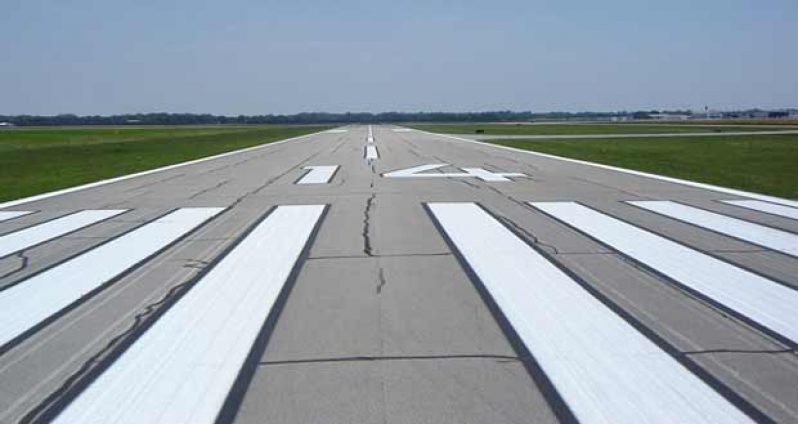GUYANA Civil Aviation Authority (GCAA) has reissued a notice to aircraft operators in accordance with the standards and recommended practices of the Convention on International Civil Aviation when landing on hinterland airstrips.
As per standard operation practice, pilots are being reminded of the need to follow the Visual Flight Rules (VFR) procedurally when operating. Flight in accordance with visual flight rules is permitted if a flight crew is able to remain clear of clouds by a distance of at least 1,500m horizontally and at least 300m (1,000 ft) vertically and to maintain a forward visibility of at least 8 km. For flights in some portions of the airspace and at low altitudes, and for helicopters, the requirements are less stringent. An aircraft cannot be flown under VFR at night or above 6 100m (20,000ft) except by special permission.
According to Minister of Public Works Robeson Benn, in light of recent incidents of aircraft encountering damage because of gusty winds and wind shear, a reminder of the VFR procedures was put in place. “It was something that had to be done because we are very concerned. Recently several aircraft have encountered gusty winds and wind shear conditions that have resulted in damage to these aircraft,” Benn noted.
In a press statement, GCAA’s Director-General Zulifar Mohamed emphasised that each aircraft has its own peculiar reaction in response to crosswinds, but generally a good crosswind landing begins with a good approach. “This is taught to pilots and every opportunity must be taken to re-enforce this,” he said.
The fact that the landing phase of any aircraft is very demanding; operators are advised to have their pilots follow the approved procedures in order to maintain proper approach and landing. If these parameters are not achieved, a go-around or diversion is necessary. The option of the go-around maneuver, an aborted landing of an aircraft that is on final approach, was also highlighted.
“This procedure should be a habit in everyday Visual Flight Rules (VFR) flying, so that a predetermined go-around plan is always fresh in the mind during the approach and can be executed at any time the approach is in doubt. Most importantly, in situations where meteorological conditions or terrain features would permit an approach but preclude a safe go-around, then that approach requires extra consideration and perhaps should not be attempted,” Mohamed explained.
He also stressed that, “Every pilot already knows that proper planning, making wise decisions, situational awareness, adherence to SOPs and having an alternate plan of action are all characteristics of good airmanship, which are essential for a safe flight.”
KNOW YOUR LIMITS
“It is important that pilots know not only the aircraft crosswind limits, but also their own personal limit and to recognise when these limits will be exceeded. The best option is to divert to another airstrip. Very often the limiting factor is related more to the pilot than the aircraft. It is therefore important to reiterate that the pilot must know his/her limits and operate within them,” Mohamed said.
Operators are also cautioned to ensure that young pilots be taught the necessary skills to operate safely on the hinterland airstrips. Pilots must be given the opportunity to practice and develop these skills, and must be comfortable operating into borderline aerodromes before they are required to operate into the aerodromes as pilot-in-command by their respective companies.
This notice was re-circulated as a precautionary measure. (Rebecca Ganesh-Ally)




.png)









